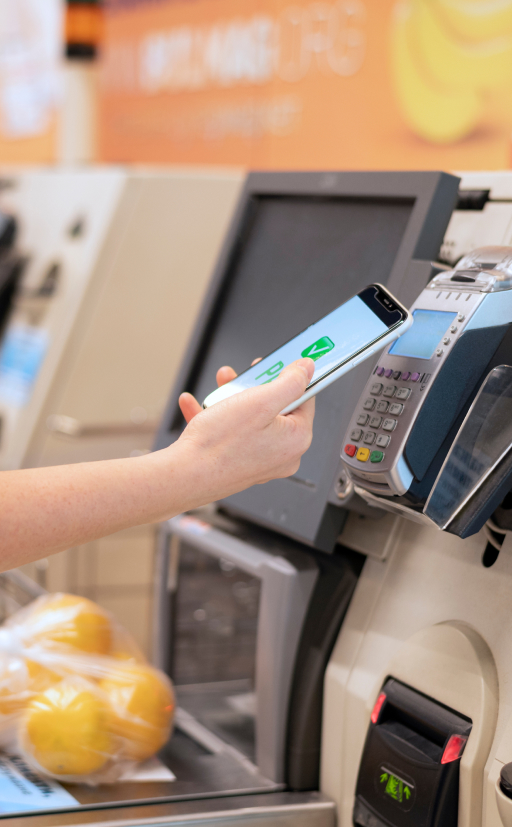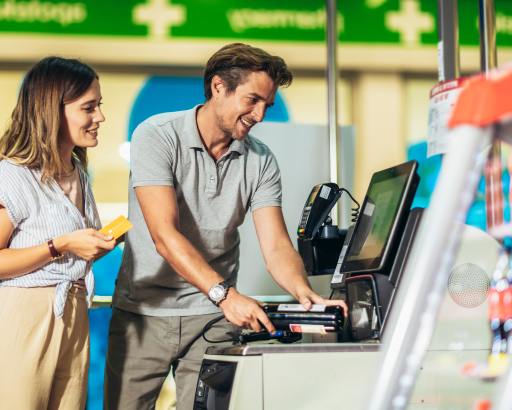Let your customers collect the cash themselves
Omnichannelity
One of our priorities is to offer customers a shopping experience that combines speed and simplicity, particularly at the point of payment.
How does Self-Checkout work?
Once customers have filled their trolleys and are on their way to the self-checkout machine to pay, the self-checkout process involves a number of steps:
- Scan each product using a fixed or mobile barcode scanner
- Identify yourself (or not, depending on your choice) to benefit from loyalty advantages
- Select the payment method and pay for the total purchase via a payment terminal or coin-operated machine.
What is self-checkout?
Self-checkout, also known as automatic checkout or self-service checkout, is an automated digital checkout terminal that allows customers to check out independently. Self-checkout comes in two forms: automatic checkouts and self-scanning.
These two solutions help to avoid queues, but are different in terms of the customer journey.
With self-scanning, the customer scans the products purchased as they are added to the basket. To do this, they use a hand-held barcode scanner.
In this way, self-scanning takes place during the purchasing process, rather than at the point of payment, as is the case with self-checkout.
Features
A single payment tool
One interface for two different uses. The self-checkout module is a single checkout solution dedicated to customer use, but it can also be switched to vendor mode if required for more traditional checkout.
Collects customer data
The self-checkout module helps you collect customer data and enrich your database. At the checkout, customers are asked to identify themselves, which then enables you to collect all the data associated with their shopping journey. Once the data has been collected, you can use this information to run personalised marketing and promotional campaigns, knowing your customers’ habits inside out.
Multi-languages
Self-Checkout removes the language barrier for foreign customers. After choosing their items, foreign customers access a checkout station.
The colour codes and pictograms in the LM Retail applications help customers to understand the purchasing process, even if they don’t speak the language.
The colour codes and pictograms in the LM Retail applications help customers to understand the purchasing process, even if they don’t speak the language.

Advantages

Reduces waiting time
Self checkout is a tool that allows you to diversify the points of collection within a sales outlet. This has two benefits: it saves time for your customers and optimises the time of your sales staff. During busy periods, this module helps you to relieve the pressure on conventional checkouts. Autonomous checkout also frees up the time of your sales staff, who can then concentrate their efforts on customers who really need advice.
Increases sales
Many customers choose to put their items down after noticing that the queue is too long. Self-checkout is the solution that will help you limit this loss of customers and increase your sales. This method is widely preferred by customers who want to save time at the checkout.
Overcome staff shortages
There are many reasons why a retailer may be short-staffed at the checkout: holidays, sick leave or poor estimates of in-store traffic. Thanks to the self-checkout module, your sales will not be lost due to a lack of staff, as your customers will be able to checkout on their own. The remaining staff can devote themselves to cashing up larger trolleys and baskets.

You’ll also like
omnichannelity
Click & Collect
Offer your customers the option of making their purchases online and collecting them in-store
RetailHospitality
omnichannlity
Order in store
Offer unified loyalty programmes between points of sale and e-commerce sites
Retail